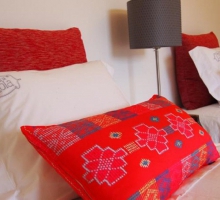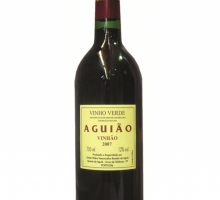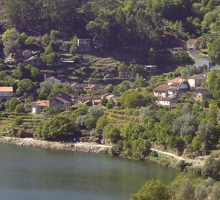Down the river Lima, along the “Serra do Soajo”, is found on a hillside from its right edge, a small village with a few centuries of existence. 20 Km from the municipality headquarters, Arcos de Valdevez, has 92 inhabitants. The quiet village of Ermelo lives a greater agitation when, the morning of July 11th large groups of people on a pilgrimage reached it, from various Parishes of Arcos de Valdevez and Ponte da Barca.
Each year on the evening of July the 10th (holiday eve Hall), in the village of Arcos de Valdevez, after dinner, joyful groups are formed, mainly of boys and girls, meaning that it’s not only a handful of elderly people gathering; no way would younger generations want to stop participating is a traditional habit…
The traditional pilgrimage begins… Some walking, wielding walking sticks; other, hiking staffs. There are even those who do not forget their “farnelzinho” (picnic food), essential to ease the hardships of the journey…
Inside the venerated Romanesque church, are remains of a grand monastery that rises between houses dating back to the early days of nationality; there is also an image of “S. Bento” (Saint Benedict), the celebrated Saint Benedict of Ermelo that all "Arcuenses" (inhabitants of Arcos de Valdevez) are particularly devout. It’s a graceful image of polychrome and gilded wood, of popular making, which must date back 200 years and is without a doubt one of the most touching images of Alto Minho Benedictine.
The people established it as its Holy healer for every “bad” evils, but with healing specialties for these skin excrescences of the hands termed “cravos” (blackheads). It is said that the blackheads are born in the hands of those who points and account the stars or the bright spots arising at night. Mr. S. Bento (Saints, here, are respectful grace…) is protective against these malevolent burdens. He not only frees us of them when we suffer, but also by his intercession, serves to get rid of such temptations when we are less careful.
In return for the Conservancy the “santinho” (Saint) is paid in eggs (traditional as it is confirmed by centuries of experience…) and with these beautiful flowers so beloved of our people, called “cravos” (carnations). Women allow him exclusively red carnations as men use white ones. Such is the rite. Just like the wax “promises”: female promises are distinguished because they are marked with a little dot of vermilion, as men are distinguished with a prominent celestial blue azure brush strike… As for the eggs, the bills are also rituals: never less than three, but can be multiples of three, six, nine or a dozen, as the promise or the generosity of “miracle” received.
The walk to Ermelo is hard and it is of obligation to do it through old pathways, as did parents, grandparents and so on… Needless to say it’s worthless to use roads drawn in the last century.
Leaving Arcos de Valdevez, the pilgrims used to climb the coastline, arriving at the top of Morilhões, they followed in the direction of “Castanheiro” place, to the sidewalk of “Proja”, “Coutada”, “Nª Srª da Luz”, “Sr dos Milagres”, “Gração”, then descended around the river Lima passing underneath “Vilarinho” until getting to “Ermelo”. The devout arriving, gives the promised rounder (three, five, seven, nine, always in odd number), around the Chapel and from right to left, prays and drops him the offerings. Then, respectfully, takes his hat off, makes the sign of the cross, kisses him and put his hat back.
The devotion fulfilled, the return of the pilgrims to their homes is optional as the means of locomotion. After assisting to mass, is usually a truck.
Location: Arcos de Valdevez







